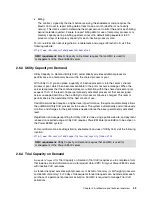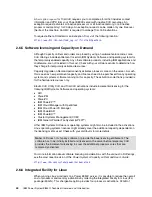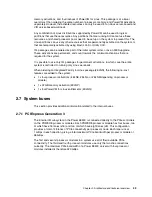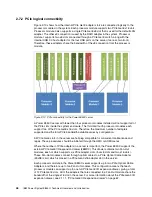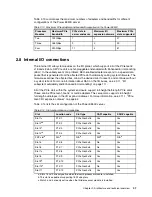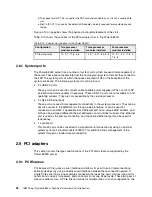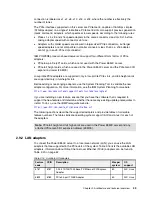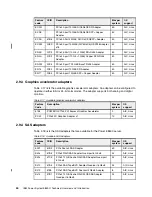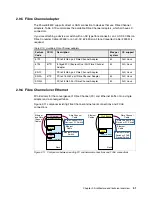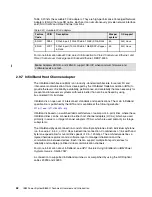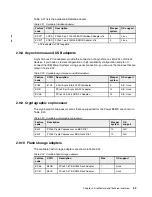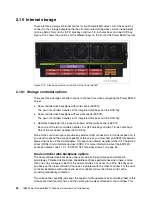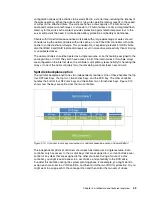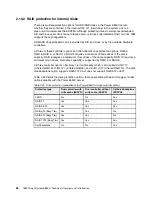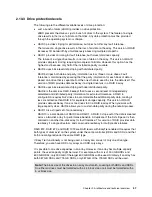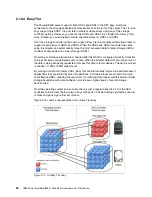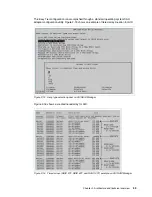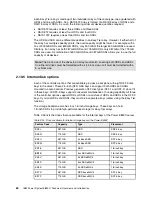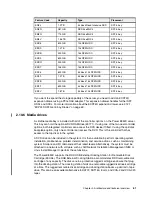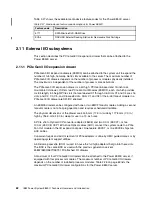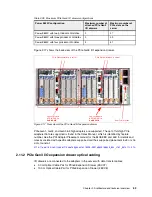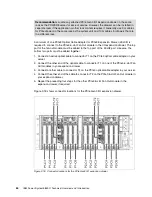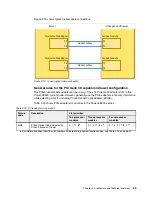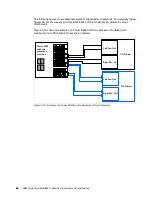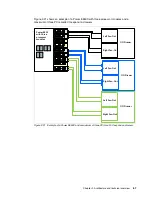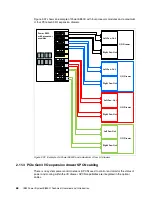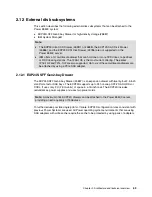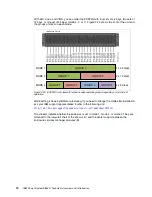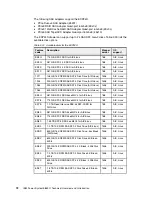
Chapter 2. Architecture and technical overview
57
2.10.3 Drive protection levels
The following are the different available levels of drive protection:
Just a bunch of disks (JBOD) provides no drive protection.
JBOD presents the drives as just a bunch of disks to the system. The failure of a single
drive results in the loss of all data on that disk. Any data protection must be provided
through the operating system or software.
RAID 0 provides striping for performance, but does not offer any fault tolerance.
The failure of a single drive results in the loss of all data on the array. This version of RAID
increases I/O bandwidth by simultaneously accessing multiple data paths.
RAID 1 provides mirroring for fault tolerance, but halves total drive capacity.
The failure of a single drive results in no loss of data on the array. This version of RAID
provides simple mirroring, requiring two copies of all data. However, this option has the
highest cost because only half of the installed capacity is usable.
RAID 5 uses block-level data striping with distributed parity.
RAID 5 stripes both data and parity information across three or more drives. Fault
tolerance is maintained by ensuring that the parity information for each block of data is
placed on a drive that is separate from the ones that are used to store the data itself. This
version of RAID provides data resiliency if a single drive fails in a RAID 5 array.
RAID 6 uses block-level data striping with dual distributed parity.
RAID 6 is the same as RAID 5 except that it uses a second level of independently
calculated and distributed parity information for extra fault tolerance. A RAID 6
configuration requires N+2 drives to accommodate the additional parity data, making it
less cost-effective than RAID 5 for equivalent storage capacity. This version of RAID
provides data resiliency if one or two drives fail in a RAID 6 array. When you work with
large capacity disks, RAID 6 allows you to sustain data parity during the rebuild process.
RAID 10 is a striped set of mirrored arrays.
RAID 10 is a combination of RAID 0 and RAID 1. A RAID 0 stripe set of the data is created
across a two-disk array for performance benefits. A duplicate of the first stripe set is then
mirrored on another two-disk array for fault tolerance. This version of RAID provides data
resiliency if a single drive fails, and can provide resiliency for multiple drive failures.
RAID 5T2, RAID 6T2, and RAID 10T2 are RAID levels with EasyTier enabled. It requires that
both types of disks exist on the system under the same controller (HDDs and SSDs) and that
both are configured under the same RAID type.
If Easy Tier functionality is not being used, an array can consist of only one drive type.
Therefore, you can have HDD only arrays and SDD only arrays.
It is possible to mix drive capacities in an array. However, if an array has multiple capacity
points, the used capacity might be lower. For example, with a mix of 300 GB HDDs and
600 GB HDDs, only 300 GB of the larger 600 GB HDDs will be used. Similarly, if an array has
both 387 GB SSDs and 775 GB SSDs, only 387 GB of the 775 GB SSDs will be used.
Note: The block size of the drives in an array must match, covering both HDDs and SSDs.
So either all drives must be formatted with a 4 k block size, or all must be formatted with a
5
xx block size.
Summary of Contents for E850C
Page 2: ......
Page 36: ...22 IBM Power System E850C Technical Overview and Introduction...
Page 114: ...100 IBM Power System E850C Technical Overview and Introduction...
Page 154: ...140 IBM Power System E850C Technical Overview and Introduction...
Page 158: ...144 IBM Power System E850C Technical Overview and Introduction...
Page 159: ......
Page 160: ...ibm com redbooks Printed in U S A Back cover ISBN 0738455687 REDP 5412 00...

